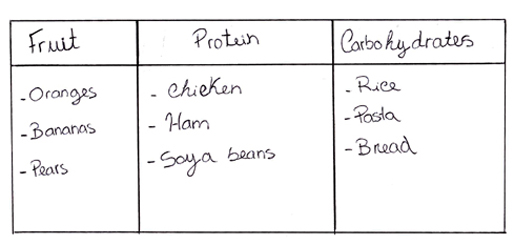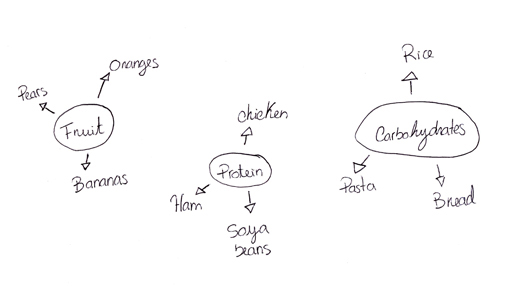6.1 Chunking
The first one is chunking, or grouping the information into meaningful units.
Listen to the following sequence of numbers. Don’t write them down.
The reason why you can probably remember the second sequence, and not the first, is because you were able to chunk the information into meaningful bits of information, and that you could relate those numbers to categories you already had in your long-term memory – key dates in UK history.
When learning vocabulary, it is a lot easier to remember vocabulary items in categories that you already understand.
So for instance, it is easier to remember:
Oranges, bananas, pears
Chicken, ham, soya beans
Rice, pasta, bread
than it is to remember those same words in this sequence:
Oranges, ham, pears, bread, rice, soya beans, chicken, pasta, bananas
The reason for that is that while the second list is in a totally arbitrary order, in the first one the items are grouped into categories that you are already familiar with (fruit, protein, carbs). So when you are learning lists of vocabulary in a foreign language, don’t just learn words in a random order, but put them into meaningful categories and that will help encode them into your long-term memory. You can do this, for instance, in a table or in a mind-map.


